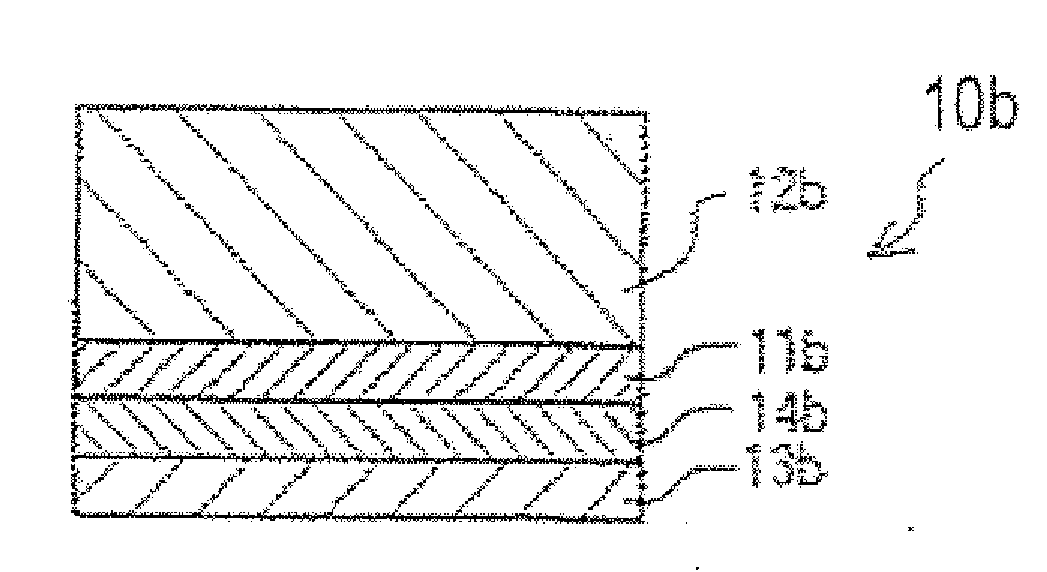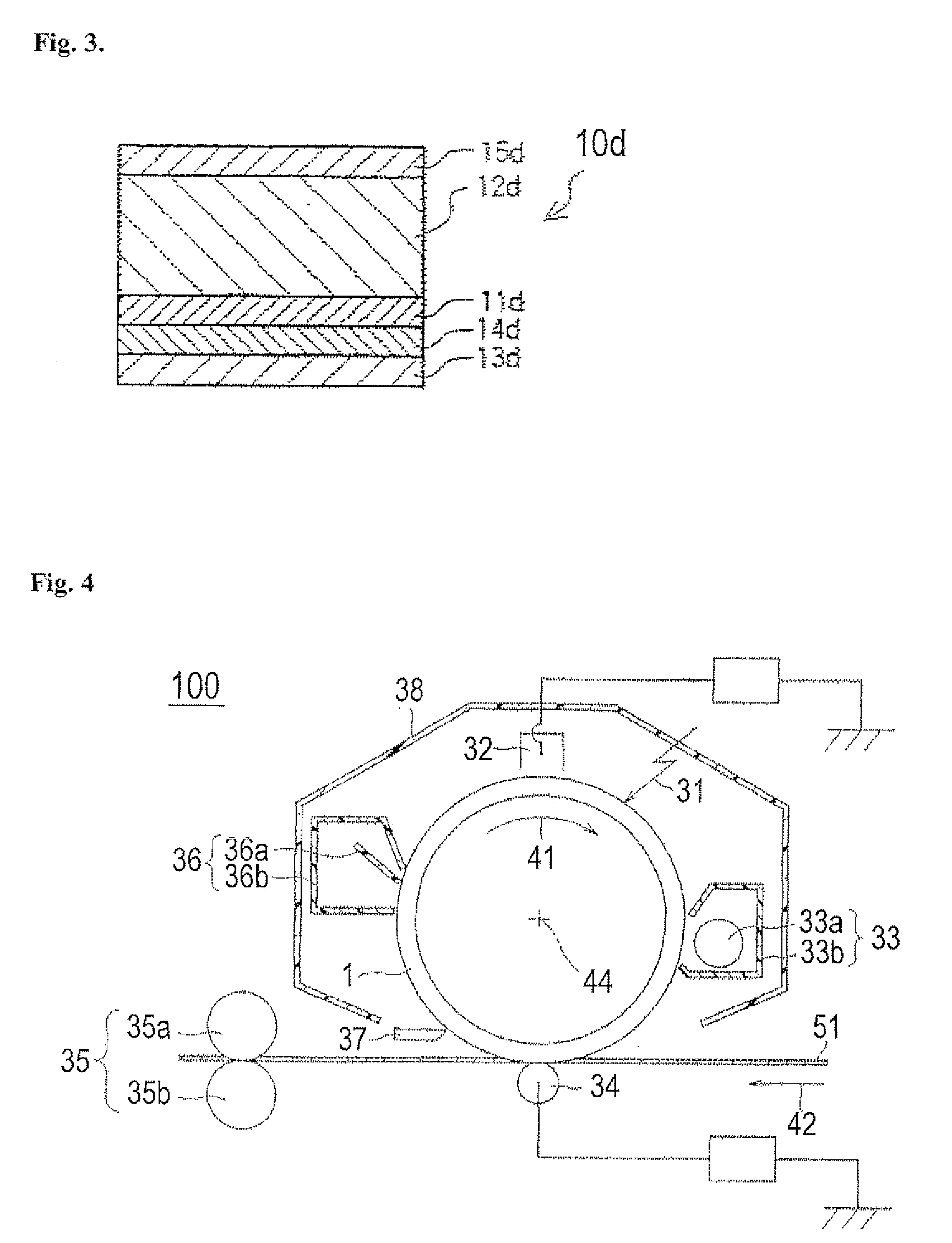Electrophotographic photoreceptor and image forming apparatus provided with the same
a photoreceptor and photoreceptor technology, applied in the direction of electrographic process, instruments, corona discharge, etc., can solve the problems of sensitivity, durability, image defects, uneven densities, etc., and achieve the effect of reducing the variation in sensitivity and good image characteristics
- Summary
- Abstract
- Description
- Claims
- Application Information
AI Technical Summary
Benefits of technology
Problems solved by technology
Method used
Image
Examples
production example 1
[0180]A polyamide resin of the present invention was produced as will be explained below.
[0181]A higher unsaturated fatty acid methyl ester (400 g) containing 72% of methyl oleate, 18% of methyl linoleate and 10% of methyl hexadecanoate was used as a raw material and a dimerization reaction was carried out at 230° C. for 5 hours by using 17% of activated white earth as a catalyst. Next, an unreacted fatty acid methyl ester fraction and an isomerized fatty acid methyl ester fraction were removed from the resulting product by vacuum distillation (230° C. / 1 torr) and the residue was subjected to molecular distillation (230° C. / 0.1 torr) to give dimethyl dicarboxylate (200 g) as a distillate and trimethyl tricarboxylate (50 g) as a distillation residue.
[0182]Then, the obtained dimethyl dicarboxylate and trimethyl tricarboxylate were mixed at a ratio of 7 / 3 and 2% of a Ni catalyst was added to the mixture, which was then made to undergo a hydrogenating reaction under a hydrogen pressure ...
production example 2
[0185]A polyamide resin (180 g) was obtained in the same manner as in Production Example 1 except that a compound obtained by methyl-esterifying commercially available HARIDIMER 200 (manufactured by Harima Chemicals, Inc.) (200 g) was used in place of dimethyl dicarboxylate used in Production Example 1 (a:b=1.0:1.0).
production example 3
[0186]A polyamide resin (190 g) was obtained in the same manner as in Production Example 1 except that a solution (1 L) obtained by methyl-esterifying commercially available EMPOL 1018 (manufactured by Cognis Corporation) (200 g) and dissolving 1.0 carboxyl group equivalent (220 g) of the esterified product in methanol such that its concentration became 25% and a solution (2 L) obtained by dissolving 1.0 amino group equivalent (26 g) of piperazine in methanol such that its concentration became 50% were used (a:b=2.0:0.5).
PUM
| Property | Measurement | Unit |
|---|---|---|
| number average primary particle diameter | aaaaa | aaaaa |
| reaction temperature | aaaaa | aaaaa |
| reaction temperature | aaaaa | aaaaa |
Abstract
Description
Claims
Application Information
 Login to View More
Login to View More - R&D
- Intellectual Property
- Life Sciences
- Materials
- Tech Scout
- Unparalleled Data Quality
- Higher Quality Content
- 60% Fewer Hallucinations
Browse by: Latest US Patents, China's latest patents, Technical Efficacy Thesaurus, Application Domain, Technology Topic, Popular Technical Reports.
© 2025 PatSnap. All rights reserved.Legal|Privacy policy|Modern Slavery Act Transparency Statement|Sitemap|About US| Contact US: help@patsnap.com



